Why indoor lemon leaves turn yellow and fall
Lemon takes root well in a pot of a suitable size and is quite capable of blooming and bearing fruit at home. Despite this, citrus is considered a whimsical plant. It is picky about growing conditions and requires the attention of gardeners. When exposed to adverse factors, the plant begins to hurt and may die.
Yellowing of lemon leaves is one of the most common problems faced by budding gardeners. This phenomenon is not typical for an evergreen citrus plant. Yellowness and falling leaves are signs of improper tree care or infection with infections and pests. Why lemon leaves turn yellow and fall, and how to save a plant - read on.
The content of the article
Causes of yellowing of lemon leaves associated with leaving
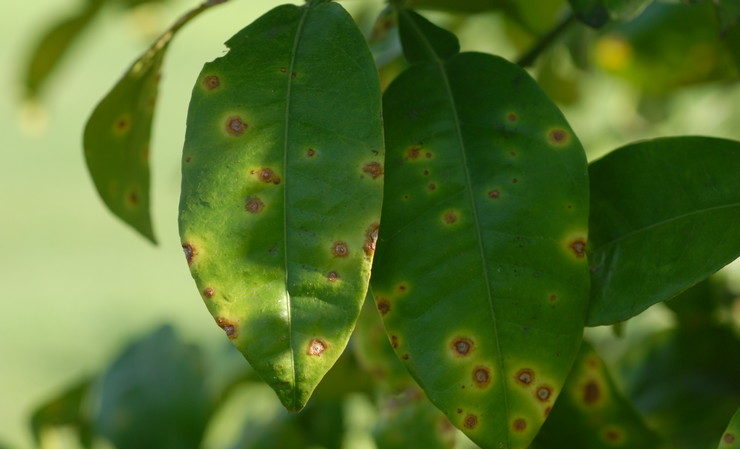
Lemon foliage yellowing is often associated with improper care and adverse conditions. cultivation.
The list presents the main reasons for the color change of the crown:
- High or low temperature. Optimum temperature readings for lemon vary between 18-26 ° C. If the room is colder or hotter than normal, the lemon starts to ache. At high temperatures, a lot of moisture evaporates from the surface of the leaves, they turn yellow and wither. Decreased temperature values negatively affect the root system of the citrus tree, leading to the death of shoots and leaf fall.
- Lack of light. Lemons are light-loving plants. In the shade, they disrupt photosynthesis, which is why the leaves of the indoor lemon turn yellow. To avoid such a problem, the tree is placed on the southern or southwestern windowsill. If the light is not bright enough or the plant is illuminated for less than 12 hours, then fluorescent lamps are used.
- Exposure to direct sunlight. Direct sunlight is as detrimental to lemon as lack of light. When they get on the plant, yellow burn spots are formed on the leaves.
- Insufficient watering. The soil in a lemon tree pot should be kept moist at all times. If it is dry, the leaves will turn yellow and fall off. To avoid such a problem, the soil is often moistened, but in small portions.
- Stagnant water. With systematic soil moistening or lack of drainage, the soil becomes waterlogged. Air does not reach the roots of lemongrass, which is why they begin to rot and die off. This will lead to leaf fall and plant death.
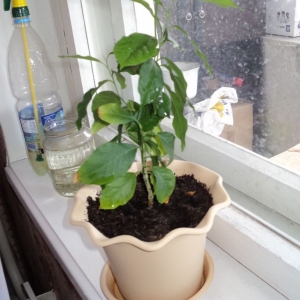
- Lack of transfers. Leaves may turn yellow and begin to fall off when the soil composition changes and there is not enough room for the root system. In such conditions, it stops developing, insoluble compounds are formed in the soil, which impede the assimilation of useful elements. Before flowering lemon transplanted annually, then once every 3 years.
- Lack of dressing. Homemade lemon often produces leaves and fruits at the same time. For the proper development of both, the plant requires a lot of nutrients. To ensure that the soil always remains fertile, top dressing is added every week.
- Temperature drops... Citrus does not tolerate temperature extremes and drafts. These factors are destructive for him. The tree cannot be placed near an open window and taken out into the street or for wintering without preliminary hardening.
- Dry air. Tropical lemon prefers high humidity.If the room is dry, then the crown begins to dry and fall off. To create an optimal moisture level, the plant is sprayed daily from a spray bottle during the growing season. In winter, if the tree is in a heated room, a humidifier or containers with water are placed near it. It is dangerous to place the plant near the battery.
Yellow leaves do not always indicate wrong leaving... If a few leaves have turned yellow on a bush, but the rest of the plant looks healthy, this is most likely due to the natural cycle of the plant.
Note! The life span of a lemon leaf is 3-4 g.
How to save a plant
If the crown of the citrus begins to turn yellow and fall off, it is urgent to take measures to save the plant. First of all, they review the care and eliminate all existing errors.
If the tree has not been watered for a long time and the earth is cracked, you cannot pour a large amount of water into the pot. The soil is moistened with a little water every two hours.
If the soil has been flooded, then the plant will have to be replanted. Before placing the citrus in a new pot, the decaying roots are cut off. The root system is treated with copper sulfate.
To help the tree recover, Epin is added to the spraying water once a week, and Heteroauxin is added to the irrigation fluid.
Signs of missing items
Lemon is picky about the composition of the soil. He should get nitrogen, phosphorus, potassium and iron regularly. In smaller doses, he needs manganese, calcium, boron, magnesium, etc.
By the type of yellowing of the crown, you can understand what elements the lemon is missing. Here are some examples:
- Lack of nitrogen. Many light yellow small dots appear on the leaf plates.
- Phosphorus. The deficiency of this component is indicated by yellowing of the sheet plate at the edges.
- Iron. With iron deficiency, the leaves turn light yellow. Only the veins remain bright green. This disease is called chlorosis.
With such symptoms, only the missing component is introduced. The rest of the time, complex fertilizers are used.
Diseases
Various diseases often cause yellowing of the crown and tips of the shoots. Many of them cause similar symptoms. To solve the problem, it is enough to prescribe the correct treatment.
Gommoz
Hommosis is a fungal disease in which cracks form on the trunk and branches... Gum begins to release from the holes in the bark. This leads to a violation of sap flow. The crown receives insufficient nutrition, which is why the leaf plates turn yellow and begin to shed leaves.
To save the plant, the infected shoots are removed and the affected areas are cut out on the trunk. Places of cuts are covered with garden varnish, and the grooves on the trunk are washed with copper sulfate and covered with garden varnish. The tree is sprayed with a fungicide.
Note! In advanced cases, gommosis cannot be treated.
Root rot
Root rot is one of the most insidious diseases. Its danger lies in the fact that it becomes noticeable only at a late stage of plant damage.
The main visible symptom of root rot is the wilting of the crown - it looks like it was scorched.
To save the lemon, it is taken out of the pot. The roots are cleaned of soil and washed in water at room temperature. All affected areas are cut off. The rest of the root system is washed in copper sulfate.
The tree is transplanted into a new pot filled with drainage and soil. All materials must be decontaminated. The soil around the trunk is compacted and watered with warm water.
Sooty fungus
Sooty fungus is another fungal disease. Black bloom forms on the lemon leaves. It can be easily washed off with a cloth or damp hand. Without timely treatment, the crown turns yellow and crumbles. The ends of young branches also begin to hurt.
Getting rid of the sooty fungus is easy. To do this, wipe off black plaque with a damp cloth. Do not put too much pressure on the sheet plate so as not to damage it.
After wiping off the sooty fungus, the tree is sprayed with a solution prepared from 1 tsp of copper sulfate and 5 liters of water. Another option is to treat the plant with a fungicide.
Note! The sooty fungus affects only immunocompromised citruses. In most cases, this disease is a consequence of plant damage. pests.
Scab and wart
Scab and wart are diseases that are caused by fungi and bacteria. Affected leaves and shoots are deformed. Dark spots and raised formations form on them. The disease affects not only the crown of the tree, but also its fruits.
Without timely treatment, the plant begins to turn yellow and dry out. Eventually, the leaves fall off and the lemon dies.
For the treatment of the disease, fungicides are used, for example, "Aktara" or a solution of copper sulfate. The product is sprayed onto a citrus plant.
Before starting to process the lemon, all the affected areas are cut off. It is recommended to water the soil in the pot as well.
Pests
Homemade lemons also sometimes infest pests. They also cause yellowing of the crown.
Spider mite
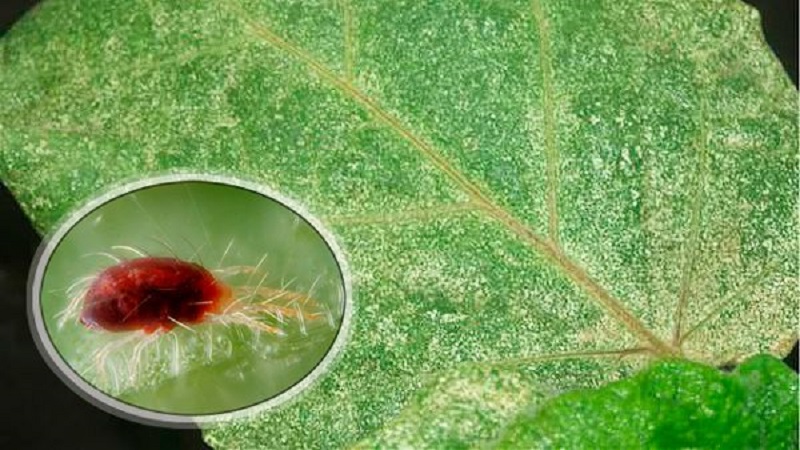
Spider mite is a small pest that settles on the seamy side of the leaf and forms spider cocoons there... Usually indoor lemons are affected by the red variety. To better see the tick, use a magnifying glass.
The pest feeds on the juices of young leaves and shoots. The plant begins to suffer from dehydration and nutritional deficiencies. His photosynthesis is disturbed, which causes the crown to turn yellow. Premature leaf fall is observed. Without timely treatment, the plant dies.
To save the lemon tree, use one of the methods:
- Insecticides. The tree is sprayed with chemicals such as "Funanon". Such funds are dangerous not only for pests, but also for people. Therefore, the fruits after processing are not eaten,
- Soap solution. In 5 liters of water, dilute 0.5 pieces of laundry soap and 1 tbsp. ash. The product is sprayed onto the crown of the plant.
- Hot pepper infusion. 5 hot pepper pods are ground in a meat grinder, pour 3 liters of water and leave for 3 days. The composition is filtered and used for spraying.
Shields
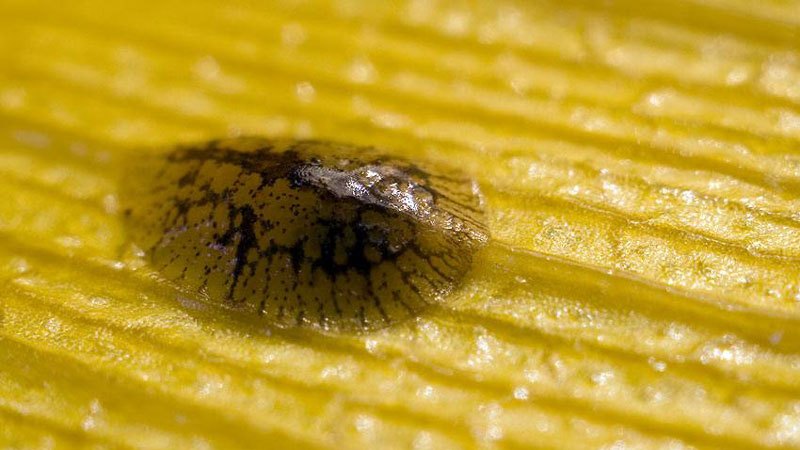
The scale insect is another dangerous pest. The insect larvae are fixed on the trunk, branches and leaf veins of the lemon and feed on the sap of the plant, as a result of which the leaves begin to turn yellow and wither. There is a massive fall of leaves.
Before starting treatment, the tree is washed under the shower. In the process, they try to remove harmful insects.
After that, the tree is wiped with kerosene diluted in a 1: 1 ratio with water. The procedure is carried out at least 3 times with an interval of 7 days.
Aphid
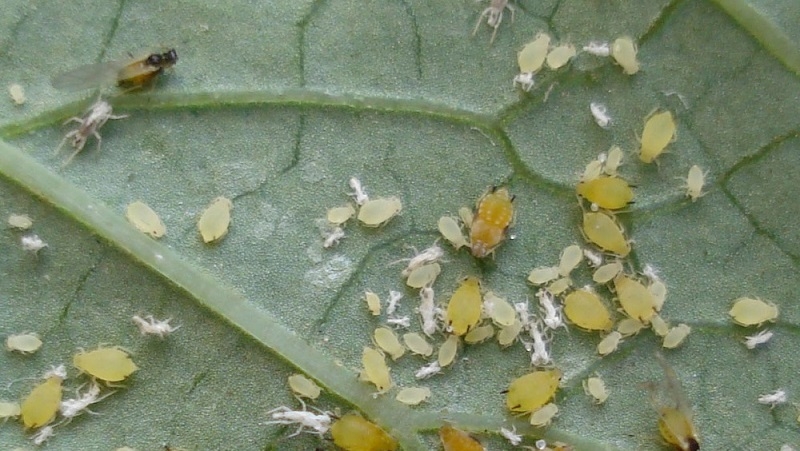
Aphids are one of the most common pests in domestic citrus fruits. These are small winged and wingless insects.... They settle on shoots and leaf plates in whole colonies.
Aphids multiply rapidly and feed on plant sap. The tree begins to suffer from a lack of fluid and nutrients. The leaf plates begin to turn yellow and curl. Sticky formations are formed on them, on which a sooty fungus settles.
Sick lemon is washed under the shower with warm water. They try to remove all pest colonies.
Aphids are easily removed by folk remedies. Therefore, citrus growers try not to use chemicals.
Folk remedies for aphid control:
- Soap and tobacco solution. 0.5 kg of tobacco are poured into 5 liters of water. The mixture is insisted for a day, then filtered. In the resulting infusion, 40 ml of liquid soap is injected.
- Orange peels. Half the jar is filled with orange peels. The rest of the volume is filled with water. The mixture is infused in a dark place for a week. Then filter and dilute with 2 parts of water.
- Decoction of bitter herbs. 0.5 kg of wormwood is boiled in 5 liters of water for half an hour. The broth is allowed to brew for a day, then filtered and used for spraying.
Mealybug
The mealybug is white in color, settles on the seamy side of the leaf in large quantities, so it is not difficult to notice the pest.
The affected parts of the plant are covered with a white bloom. Then they turn yellow and curl up. Gradually begin to dry out and fall off.
To get rid of the pest, wash the lemon tree under running water. The affected parts of the plant are cut off. The tree is sprayed with insecticides.
Nematode
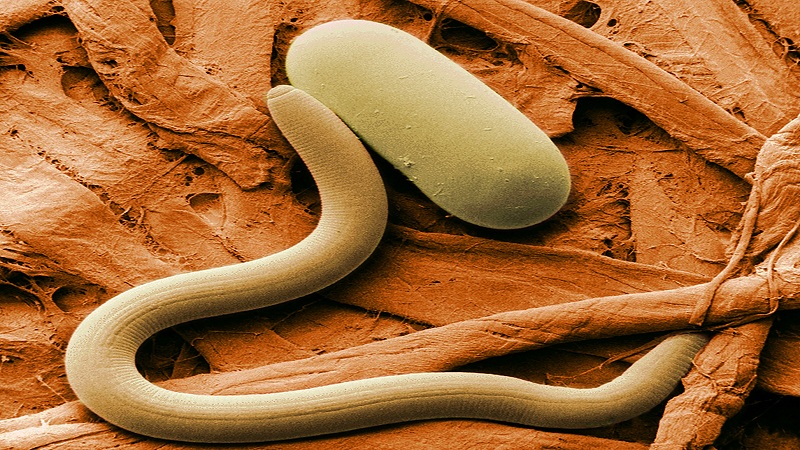
Nematodes are small worms that live in lemon horses. They feed on the juice of the root system, leading to its destruction.
The pest cannot be seen with the naked eye. It can be detected when the problem has already reached significant proportions. In this case, the leaves of the plants turn yellow and curl. Then they fall off. Ultimately, the tree dies.
To remove pests, the lemon is removed from the pot. The roots are washed with warm water. Then they are treated with insecticides or a solution of copper sulfate.
After that, the plant is transplanted into a new pot. The soil is pre-disinfected.
Prevention of yellowing of leaves
Yellowing of the leaves indicates serious problems. Even after eliminating the causes, plants recover for a long time.
Therefore, it is important to take care of prevention in advance:
- To ensure optimal soil moisture, water is not poured into the pot, but into the pan under it.
- Provide optimal temperature, lighting and humidity.
- Disinfect soil, planting material and garden tools.
- Follow the schedule top dressing... Complex mineral fertilizers are alternated with organic fertilizers.
- Lemon is transplanted regularly. To check if the roots have filled the pot, a toothpick is inserted into the soil. If it goes hard, then it's time to transplant the citrus.
Conclusion
Citrus is an evergreen plant. The yellowing of the leaves is unnatural for him. It indicates a violation of the rules of care, unfavorable growing conditions, damage by diseases and pests. A similar symptom requires immediate intervention by the citrus grower.
To reanimate the plant, it is necessary to find and eliminate errors in the care. Check the tree for diseases and pests, and if they are found, provide the correct treatment. In some cases, transplanting and creating greenhouse conditions may be required.